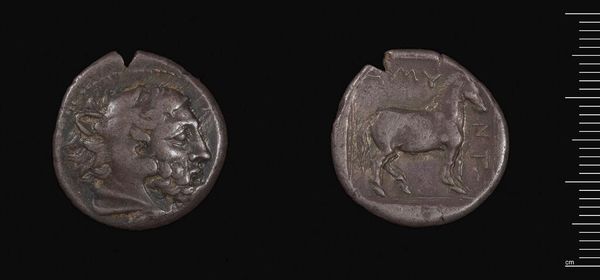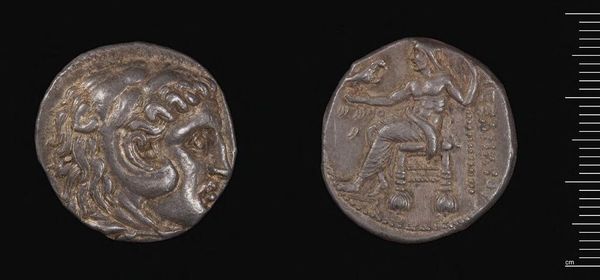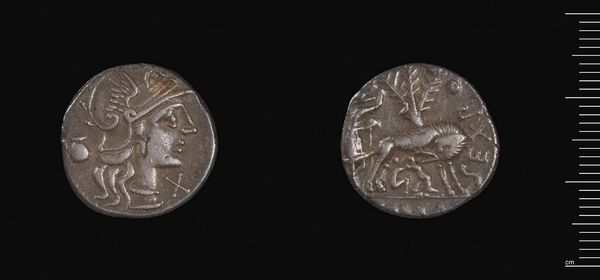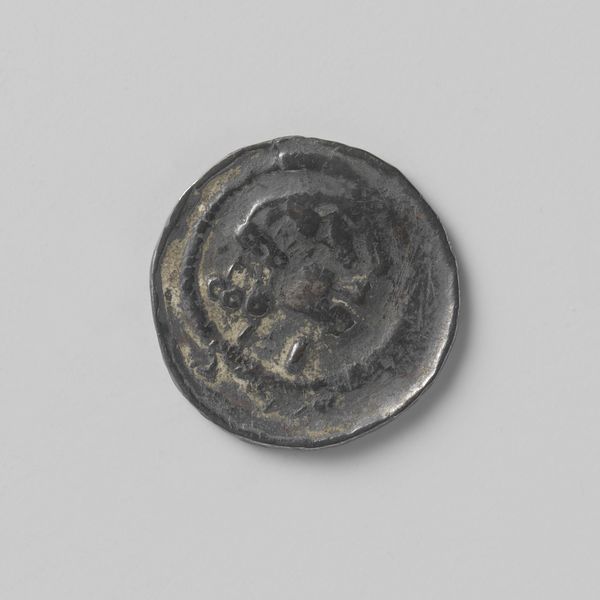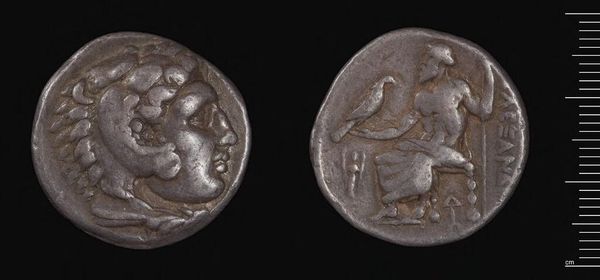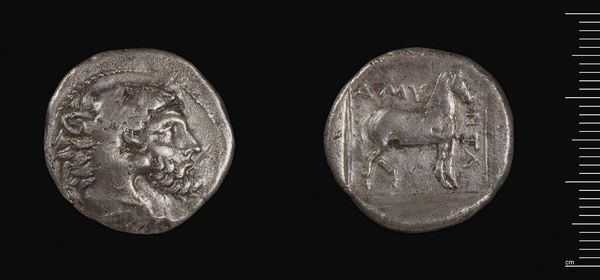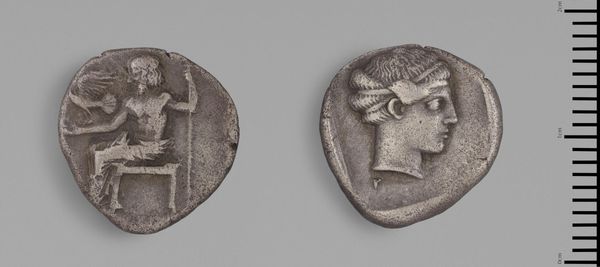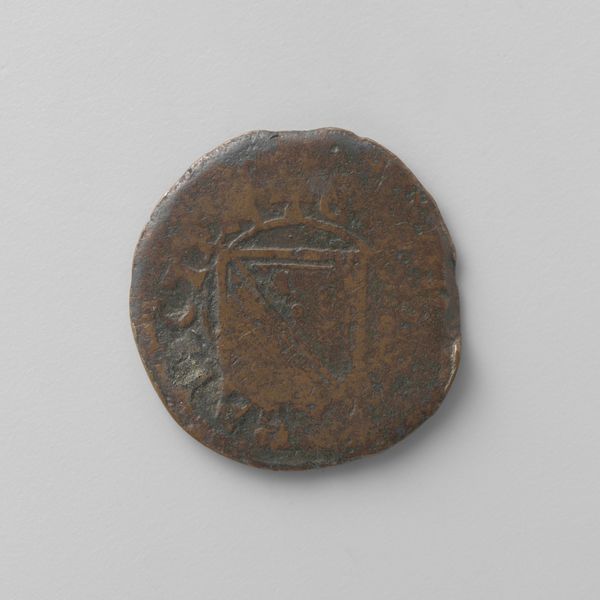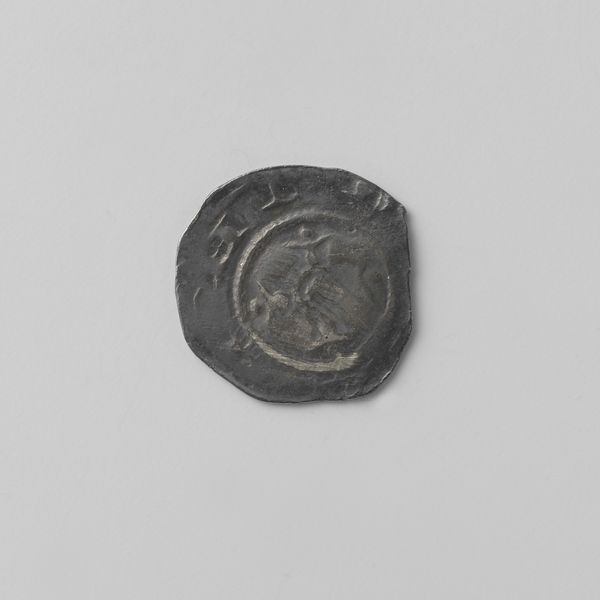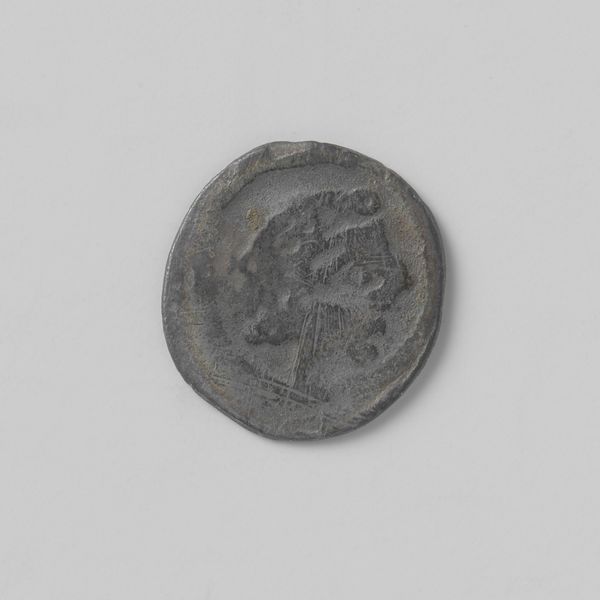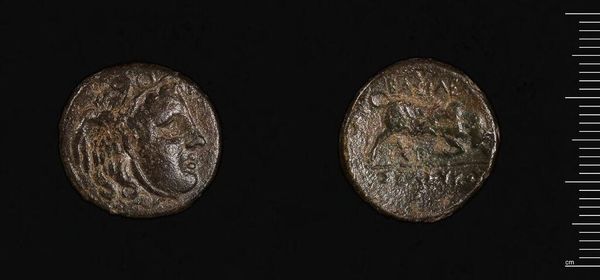
carving, metal, sculpture
#
carving
#
metal
#
sculpture
#
figuration
#
geometric
#
ancient-mediterranean
#
sculpture
#
carved
Copyright: Public Domain
Curator: Take a moment to observe “One of twenty-one seals,” a metal carving dating back to approximately the year 800, part of the Minneapolis Institute of Art's collection. Editor: It's intriguing. The circular shape, the dense, almost chaotic composition… it gives an impression of restrained energy, like something waiting to be unleashed. Curator: Precisely. Note the intricate carvings within the circular form; we observe what seems to be figurative representations amidst geometric abstraction. How do you perceive the interplay of these elements? Editor: There’s a tension, isn’t there? The figures, while present, are almost consumed by the geometric patterns. It could reflect the socio-political climate of the time, perhaps the individual's place within a rigid societal structure. Curator: A compelling interpretation. We also might look to its materiality. Consider the use of metal – the medium imparts a sense of permanence and authority to the piece, contrasting with its relatively diminutive scale. How does the sculpture communicate a message? Editor: Its physical size certainly implies a purpose beyond mere decoration. Being one of twenty-one, the repetition suggests standardized symbolism used institutionally, something official like royal emblems, perhaps a way of maintaining power in that time. Curator: I see your point, the series and deployment carry an administrative connotation, hinting at its creation to standardize a symbolic language used throughout the region or kingdom for documentation, dissemination and maintenance of a certain political order. Editor: Absolutely. These kinds of seals were also useful for trade, religious power structures, marking territory, indicating ownership. But still, how the eye is pulled to those animal figures is incredible given its small size. Curator: Indeed. The interplay between material, form, and context presents us with layers of interpretation, revealing insights into not just aesthetics but cultural values from around 800. Editor: A potent reminder of how objects can encapsulate history, power, and artistic expression in such concise and impactful forms.
Comments
No comments
Be the first to comment and join the conversation on the ultimate creative platform.
